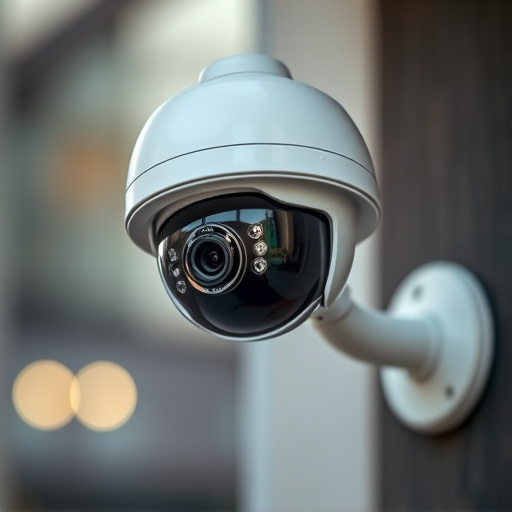Strategically placed dummy security cameras act as powerful psychological deterrents, significantly reducing crime likelihood by creating an illusion of enhanced security. While they don't record constantly, their visible presence can effectively discourage potential criminals and vandals, making them a valuable tool for both homes and businesses in conjunction with real camera systems. However, their use must balance security needs with privacy rights, adhering to legal and ethical guidelines.
“Uncover the power of dummy security cameras as a strategic tool in crime deterrence. This comprehensive guide explores how these simulated devices can significantly impact criminal activity while navigating legal and ethical boundaries. From understanding their role in deterring potential offenders to uncovering effective placement strategies, we delve into the science behind dummy cameras. By addressing common misconceptions, we separate fact from fiction, ensuring you gain insightful knowledge on maximizing the benefits of visual deterrents.”
- Understanding Dummy Security Cameras and Their Role in Crime Deterrence
- Strategies for Effective Placement: Maximizing Visual Deterrent Benefits
- Common Misconceptions and Realities About Fake Camera Impact on Criminal Activity
- Legal and Ethical Considerations: Balancing Surveillance with Privacy Rights
Understanding Dummy Security Cameras and Their Role in Crime Deterrence
Dummy security cameras, also known as decoy or fake surveillance devices, are an innovative tool in crime prevention and deterrence. These realistic-looking but functional mockups serve as a powerful visual deterrent to potential criminals. By strategically placing them in areas where security is a concern, businesses and homeowners can send a clear message that they are aware of their surroundings and willing to protect themselves.
The effectiveness of dummy cameras lies in their ability to create an illusion of heightened security. Criminals often target locations with minimal or non-existent surveillance, making well-placed fake cameras a game-changer. When installed correctly, these decoys can significantly reduce the likelihood of actual crimes occurring, acting as a psychological barrier for would-be offenders.
Strategies for Effective Placement: Maximizing Visual Deterrent Benefits
Dummy security cameras, when strategically placed, can significantly deter potential criminals from targeting your property. The visual presence of surveillance equipment serves as a powerful psychological deterrent, making would-be intruders think twice before attempting any unlawful activity. By positioning these fake cameras in prominent, well-lit areas, you create an illusion of enhanced security, thereby reducing the likelihood of crime.
To maximize their effectiveness, consider mounting dummy cameras at entry points, such as doors and windows, and in open spaces where they can be easily seen. The key is to ensure their placement aligns with real camera locations, creating a realistic appearance. This deceptive strategy not only prevents crime but also discourages vandals from damaging or tampering with the devices, making them an excellent investment for home or business security.
Common Misconceptions and Realities About Fake Camera Impact on Criminal Activity
Many people believe that dummy or fake security cameras are ineffective deterrents for criminal activity, often assuming they provide no real security benefits. However, this misconception could not be further from the truth. Research shows that strategically placed dummy cameras can significantly impact crime rates in various settings, from businesses to residential areas.
While it is true that criminals may attempt to avoid detection, these fake cameras still serve as a powerful psychological tool. They create an illusion of heightened security, which can deter potential offenders who prefer easier targets. The mere presence of dummy cameras often leads to a perception of increased surveillance, making areas seem less attractive for illegal activities. This strategy is especially effective when combined with real camera systems, as it adds an extra layer of protection and encourages crime prevention.
Legal and Ethical Considerations: Balancing Surveillance with Privacy Rights
The placement of security cameras, including dummy or fake cameras, raises important legal and ethical considerations, particularly regarding privacy rights in public and private spaces. While surveillance technology can be a powerful tool for deterring crime and enhancing safety, it must be implemented with care to avoid infringing upon individuals’ right to privacy. The use of fake security cameras as part of a broader strategy should balance the need for security with the legal protections afforded to citizens under data protection laws and human rights legislation.
In many jurisdictions, there are strict rules governing the installation and operation of surveillance systems. These regulations often require clear visibility of camera placement, legitimate reasons for monitoring an area, and safeguards to protect personal data. Dummy cameras can be a strategic element in this mix, as they may deter potential criminals without constantly recording or storing sensitive footage. However, it is essential to ensure that their presence does not give rise to false assumptions about enhanced security, leading to an over-reliance on surveillance as a primary crime prevention method.
While the effectiveness of dummy security cameras in deterring crime remains a topic of debate, extensive research suggests that strategically placed fake cameras can significantly reduce criminal activity. By leveraging their strong visual deterrent, these cameras serve as a powerful tool to enhance public safety without compromising privacy rights. Understanding both the science behind their impact and the legal boundaries surrounding their use is crucial for communities looking to maximize the benefits of this cost-effective crime prevention strategy. When implemented thoughtfully, dummy security cameras can play a pivotal role in creating safer, more secure environments.
